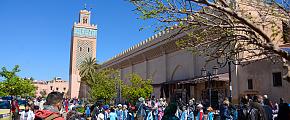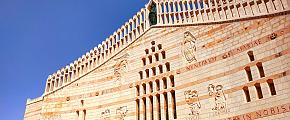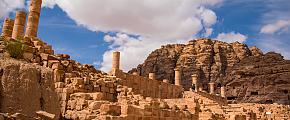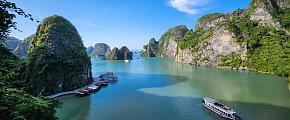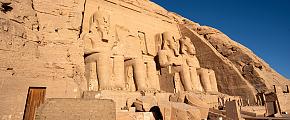The Most Incredible Places to Visit in Peru
Peru, a country in western South America. Different from other countries in South America, you can see the dense rainforest all year round, visit coastal cities, and of course, mountains that divide the country into two parts. Because of its unique geographical location, the weather in Peru is volatile. Peru's demographic component is complex, and some of them are descendants who used to come from Europe. Peru is the center of the Inca Empire and has a long history. Among them, Cusco, the capital of the Inca Empire, was established in the 11th or 12th century. It has vast mineral, agricultural, and marine resources, until now, we can see many of the purest and simplest ways of farming in this country. Peru has a unique food culture. Due to climatic factors, Peru has a wide variety of crops and is adjacent to the Pacific Ocean. It is rich in fishing resources and provides many unique ingredients. Local residents provide tourists with a lot of delicious food such as Ceviche through various cooking methods. At the same time, it includes many favorite attractions for international tourists such as Machu Picchu, Lake Titicaca and Uros Island. A Peru tour will never disappoint you
Lima - the Capital of Peru
Lima City, the capital of Peru, also known as "the rain-free capital" is divided into two parts: Old City and New City. Most of the streets are named after Peruvian provinces and cities. The houses are low, most of which were built during colonial rule. The Old Town is most famous for its "Weapon Square" in the center of the city. There is a fountain in the center of the square, and the splash of water splashes, making the city particularly lively. The Catholic Church at the eastern end of the square was built in the 17th century, which reflects a strong Spanish architectural style. The church contains silver altars, exquisitely built churches and glass coffins of Pizarro, the designer of the square and the leader of the Spanish colonial army.
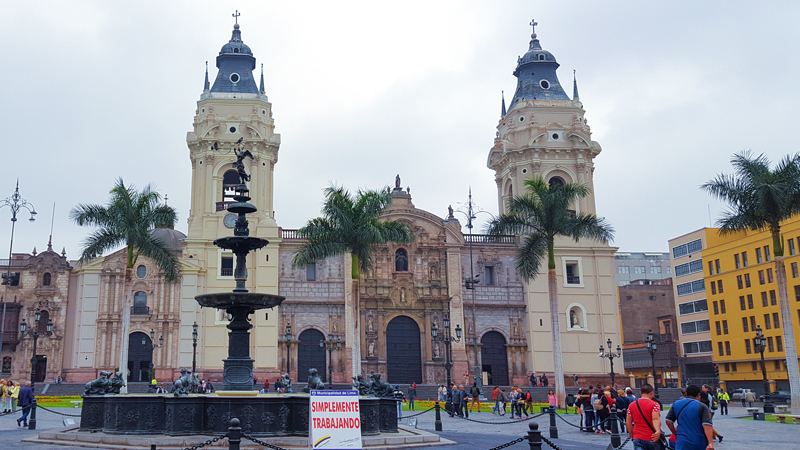 Main Square of Lima
Main Square of Lima
In the Old Town, there is St. Martin's Square, which is famous in the world, and the oldest university in South America—the University of San Marcos, which was built in 1551. The National Museum of Peru is an important way for tourists to learn about Peruvian history. It was established in 1976. There are many historical collections in the museum, such as the statue of the ancient god from the ruins of Chavín de Huántar.
Puno - the Birthplace of the Inca Empire
There's an old legend about Puno that the beginning of Puno started from Lake Titicaca when Manco Capac and Mama Ocllo founded the Inca dynasty. Let's put attention on Lake Titicaca. It's the capital of Peru's folkloric tradition and the highest navigable lake in the world.
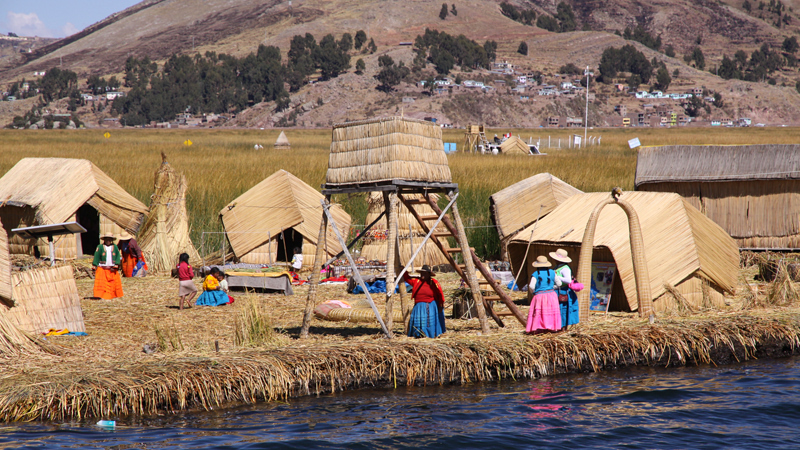 Punom, the Birthplace of the Inca Empire
Punom, the Birthplace of the Inca Empire
Then there is Uros Island which must be mentioned when it comes to Lake Titicaca. Uros Island is the floating village of Lake Titicaca. A very ordinary plant—the Totora plant, provides almost everything in life for the surrounding residents by using it to build houses and boats. Even the islands themselves are all made of totara reeds. It is said that the island was a shelter built by its ancestors from the Americas in an ancient civilized society to escape the war. Until now, island buildings still retain a primitive atmosphere. When tourists are in it, and the residents give you the local handicrafts, as if you were used to being part of here, the air you breathe is full of the purest and most delicate primitive flavor. So with this fresh air, we can understand what a strong sense they have of environmental protection.
With the development of tourism, the living standards of local residents continue to increase, and government departments have increased their investment in infrastructure construction. The unique mode of transportation is brighter, so Uros Islands becomes a good choice to understand the primitive culture.
Inca Market
Every city has a variety of markets full of local customs because the market can directly reflect a local folk culture. Inca Market, located in Lima City. In this market, you can find a variety of Peruvian souvenirs, the most distinctive of which is the Peruvian mythical beast alpaca wool products. Alpacas are a common element in Inca artifacts, because for Inca, alpacas can not only provide wool but also fuel their dung. Secondly, they can cross the Andes and survive in an environment close to cliffs. Thus, Inca Market is a good place to choose gift items for family and friends at cheap prices. There are exquisite fabric decorations, decorative paintings, clay sculptures, etc. Most of them are bright colors and have the special characteristics of Inca culture.
Paracas National Reserve (Reserva Nacional de Paracas)
Reserva Nacional de Paracas is located 247 kilometers south of Lima, in Ica Province. Although it is close to the coast, there is very little rainfall and the sun is shining all year round. The Peruvian government attaches great importance to the development of tourism resources and has listed Paracas as a national nature reserve. The most fascinating place in the reserve is Islas las Ballestas, which consists of South Island, North Island and Middle Island and six reef islands. There are many endangered marine animals and birds on the island, mainly seals, penguins, flamingos, sea turtles, dolphins, etc. In particular, seals are the most spectacular. Some bold seals will probe around the cruise ship, which is very popular among tourists. The top of the island can be called a paradise for seabirds. There are countless black and white seabirds. One of the penguins is unique to the local area. A large amount of bird droppings on the island, which is a high-quality fertilizer, is the main natural resource developed in Peru in the 19th century.
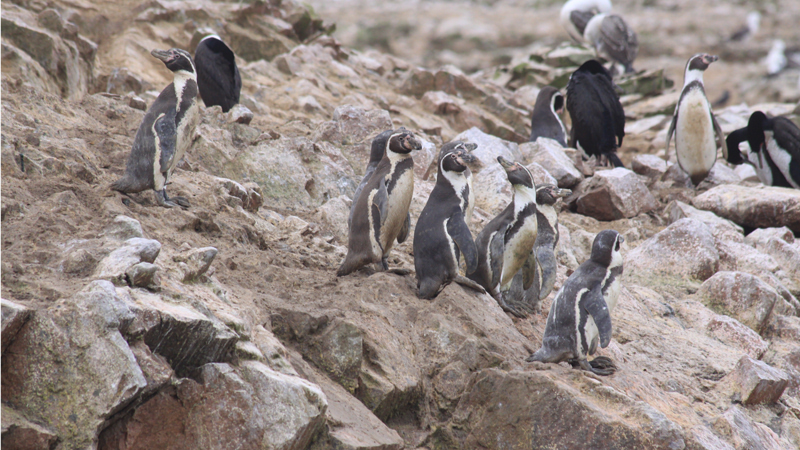 Penguins in Paracas National Reserve
Penguins in Paracas National Reserve
According to archaeologists, Paracas is 5,000 years old. On the way from Paracas Bay to Islas las Ballestas, people can see a huge pattern on the slope of a small island, which is shaped like a candlestick and some like a cactus tree. Some archaeologists believe that this was used to navigate ships in the past, while others think it was portrayed by aliens. What is the age of this pattern and its role? It is still an unsolved mystery.
Arequipa - La Ciudad Blanca
Arequipa is the second largest city in Peru. Unlike other cities in Peru, Arequipa preserves many well-preserved Spanish colonial buildings in the Americas, most of which are made of white volcanic rocks, so the city has the title of La Ciudad Blanca (White City).
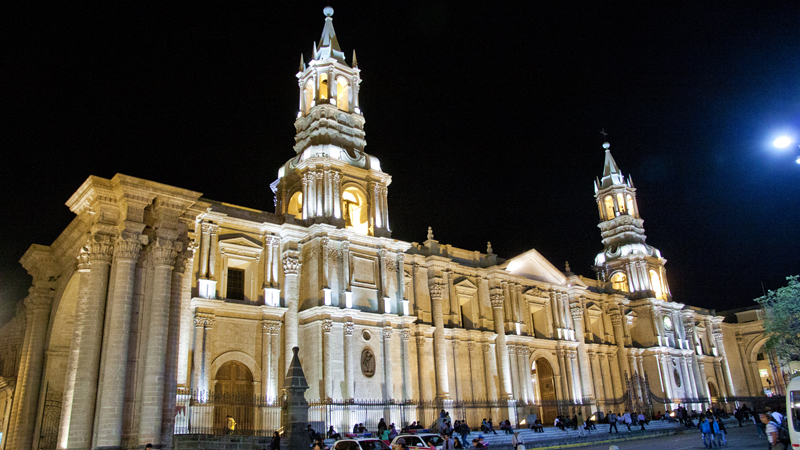 Basilica Cathedral of Arequipa
Basilica Cathedral of Arequipa
The climate is dry and mild, with four seasons the same as spring, and the average annual temperature reaches 14.4°C.
It's an important military stronghold of the War of the Pacific between Peru and Chile (1879 - 1883). This war was one of the largest wars in Latin America in the 19th century, which had a far-reaching impact on the international political landscape in South America and even the Western Hemisphere.
Cusco - the Location of the Film "The Motorcycle Diaries"
The ancient city of Cusco is located in the rich valley of the Eastern Andes at an altitude of 3410 meters above sea level in the Peruvian Andes. The climate here is pleasant, with steep mountains and lush trees around the city. Therefore, it is also known as the pearl on the crown of the Andes. On November 15, 1533, the Spanish colonists broke through the city. Then the 1650 earthquake destroyed the rebuilt city. Instead of completely destroying the Inca temples and walls, the Spaniards built their own churches and monasteries on their basis, so they can often see two styles and civilizations in a building in Cusco. It has both traces of the Inca Empire and the Spanish style.
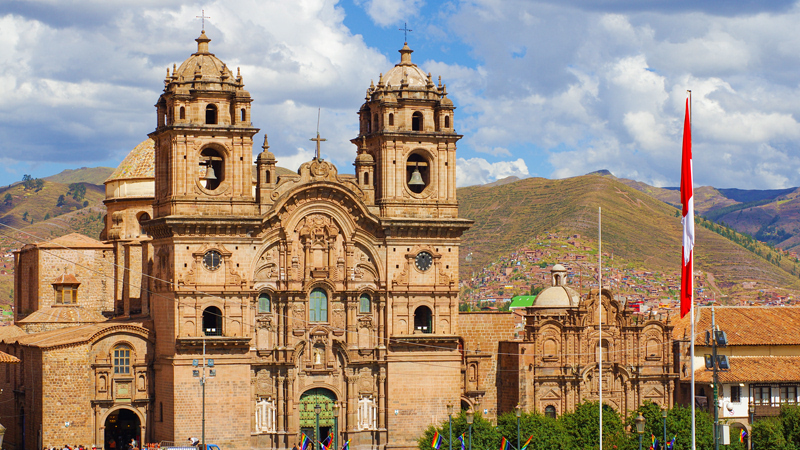 Cusco Cathedral
Cusco Cathedral
Plaza de Armas, after the Spanish colonists invaded various cities in South America, there was an open space to store weapons, which was later called the "Plaza de Armas". It could serve as a witness to colonial rule at that time.
More Tips to Pay Attention:
1. Weather and Time: The summer in Peru begins in January and ends in March. The weather is not suitable for travel so the recommended travel time is from May to October.
2. Preparation: If you need to travel to the plateau area, in order to avoid altitude sickness, it is recommended to take more rest, eat lightly and drink more water on the first day of arrival. It is also helpful to prepare some lemon candy. Then try to avoid strenuous exercise during the play, make sure to sleep well and not to drink alcohol.
Yellow fever vaccination is required to enter and exit Peru. Please make sure your vaccination is effective within 10 days before arrival in Brazil, otherwise boarding is not allowed.
Peruvians taboo "13" and "Friday". They think they symbolize unlucky, and there will be a great disaster.
Peru is one of the birthplaces of the ancient Inca civilization, and the whole country is shrouded in mystery. Unless you experience it yourself, you will never feel the charm of ancient Inca culture.
If you're interested in it, please contact us for more details. All you need to do is tell us what you want, and our professional experts will creat a tailor-made itinerary for you within 24hrs. We're looking forward to your visit.

